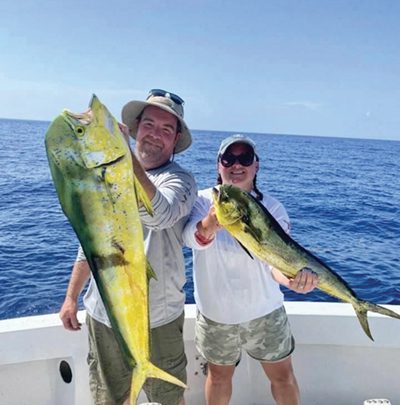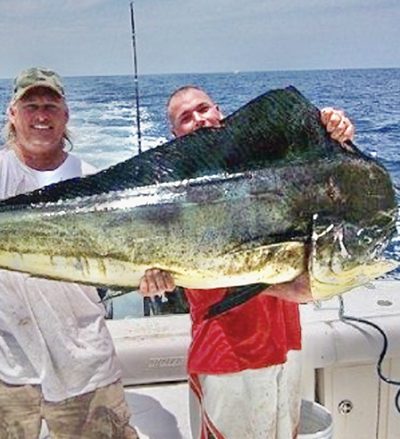 Late Season Mahi
Late Season Mahi
By: Capt. Joel Brandenburg
Late season mahi is very weather dependent. If we get an early cold snap or two that can shut down the bite for the rest of the year. If the weather stays warm until Christmas or New Year’s, it’s likely that the mahi will stick around. So, it’s not unusual for us to still be catching mahi during the holidays here in the Florida Keys. We tend to see the quantity decrease, and the average quality increase.
For example, during the summertime we have to work through the chicken dolphin to find the bigger ones a lot of times. During the fall and winter months, it’s hard to catch any undersized dolphin and most of the dolphin that we catch during the fall and winter months will be 25 inches plus. We pay attention to minor mahi habitat more in the cooler months than we do the warmer months.
For example, in the warmer months it is common to run into a 3 mile long 20-yard-wide weed lines or run into several flocks of birdnatos (birds gathered feeding in a tornado pattern) or several floaters like trees or pallets of wood floating. Those are all obvious major mahi habitat.
In the cooler months we will pay attention to 100 yard, 2-inch-wide trash line or focus in on a single bird or troll hard on a bucket lid. Where in the warmer months we’d probably pass a lot of that up looking for “greener pastures”. Mahi habitat we might pass up in the summer we pay a lot more attention to in the fall and winter months mainly because there’s less out there to pay attention to.

During the warmer months many times we’ll leave a hooked mahi off the back of the boat as a decoy to bring in a school of mahi, which we can pick off easily with hooked cut bait, such as ballyhoo or squid. During the cooler months, there is less mahi, and they are harder to trick into the boat by using a decoy dolphin. Since they are harder to fool, we like to target the school with live pilcher’s rather than cut bait. Plus, in the summertime sometimes it’s so hot the mahi are lethargic and less likely to chase fast moving live bait and would prefer the easy kill of a piece of cut bait floating down in front of them.
During the cooler months, they are less lethargic and more aggressive and prefer live bait overcut bait. We troll a little faster in the cooler months too. I know I keep referring to mahi as dolphin and dolphin as mahi. That’s only because a lot of people who aren’t familiar with fishing down here think I’m talking about Flipper or Winter the Dolphin, so for tourist reasons, I call dolphin mahi a lot of times as almost everybody knows what a mahi is. If you are in search of a big trophy bull mahi, now is the time to target them.
One of the cool things about mahi fishing this time of year is that you have a better chance of hooking into a wahoo, large black fin tuna, sailfish, blue marlin or several other types of pelagics. During the cooler months, we typically venture out in our 40 and 50 foot vessels rather than our 25 and 30 foot vessels because the waves are bigger this time of year. We like to head 30 miles out towards the marathon humps, which is a world, renowned underwater mountain range known for its big pelagics. On the way out to the humps, and on the way back from the humps, we are looking for birds, floating objects, bigger than a water bottle and any organized weed lines. If we find any of those three, we will troll them.
Go out and give mahi a try one last time, big waves big fish!

 Late Season Mahi
Late Season Mahi